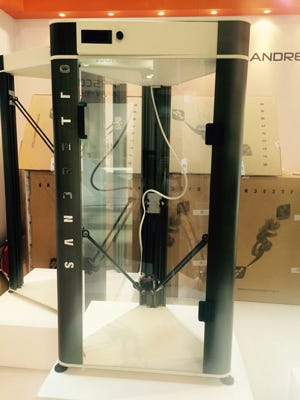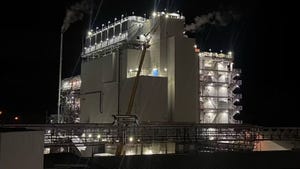After Arburg, Italian molding machine maker Sandretto enters 3D printing arena
The Italian press manufacturer Sandretto (Pont Canavese) is back in the game. Over the past two years, Sandretto has acquired a new owner, new management and new headquarters. It has developed innovative new products, expanded and improved its sales and technical support network and, importantly, undergone a cultural transformation, reaffirming its Italian identity, all with the aim of relaunching itself on the market as a leading and innovative international player. And with success.
May 6, 2015
The Italian press manufacturer Sandretto (Pont Canavese) is back in the game. Over the past two years, Sandretto has acquired a new owner, new management and new headquarters. It has developed innovative new products, expanded and improved its sales and technical support network and, importantly, undergone a cultural transformation, reaffirming its Italian identity, all with the aim of relaunching itself on the market as a leading and innovative international player. And with success.
 Sandretto has taken advantage of the opportunity provided by the Plast Milan 2015 trade show to present a host of novel products, including a range of heavy-duty, industrial 3D Delta printers. With the launch of its new printer range, Sandretto becomes the second injection molding machine manufacturer to enter the additive manufacturing arena, after Arburg, who launched its freeformer two years ago at K2013.
Sandretto has taken advantage of the opportunity provided by the Plast Milan 2015 trade show to present a host of novel products, including a range of heavy-duty, industrial 3D Delta printers. With the launch of its new printer range, Sandretto becomes the second injection molding machine manufacturer to enter the additive manufacturing arena, after Arburg, who launched its freeformer two years ago at K2013.
Roberto Moretti, Additive Manufacturing COO, was quick to explain the difference between the 3D printers developed by Sandretto and those made by other companies. "These printers have been specifically developed for heavy-duty industrial products," he said. "We developed them in response to demand from our existing injection molding machine customers. That is also the group whom we are initially targeting with this new product line."
According to Moretti, 3D printing can, in a number of cases, offer customers a good alternative to injection molding. "Sometimes the series is simply too small to justify the expense of making a mold," he said. "If they need to produce 10,000 products or more, then injection molding is the answer. Also: sometimes customers are in a hurry and can't wait for a mold to be produced. In that case, 3D printing can be a solution, as well."
The 3D Delta printers—tall, long-legged and unmistakably of Italian design—are currently available in three sizes. "We don't sell just one," said Moretti. "We sell them in sets. Customers can buy a set of 10 machines for an extremely affordable €20,000, which enables them to print anywhere from 500 to 1000 products in just three days."
The printers use 1.73-mm filament, and have been tested with PLA, ABS, TPU, HIPS, SEBS, PET and PETG. Product strength, said Moretti, is not yet as strong as with injection molding, but this is being addressed. Sandretto sees the ongoing process of technological convergence within the field of real-time processors, sensors and electric motors as leading in the short term to additive manufacturing becoming an integral part of the manufacturing processes of structural products, whether plastic or metal. When this happens, Sandretto will be ready to lead the way.
The printers are among the largest and fastest on the market today. The products feature important innovations in terms of firmware, control functions and error handling. According to Moretti, Sandretto is now working on the next step of its additive manufacturing venture: New machines and technologies, he said, are underway. To that end, Sandretto is also building a dedicated laboratory, known as the Sandretto Skunk Work Lab, in Lazio, Italy.
Also on display at the show: the innovative Serie Dieci injection presses with clamping forces between 30 and 500, protected by two patents and equipped with the new SEF 3000 Gefran control units and chamber temperature monitoring system. The plasticizing chambers on these machines are heated by means of magnetic induction. According to Sandretto, this allows the heating time to be reduced by up to 40%, thus saving energy, while it also promotes the homogeneity of the molded part, improves efficiency and eliminates thermal inertia.
About the Author(s)
You May Also Like


